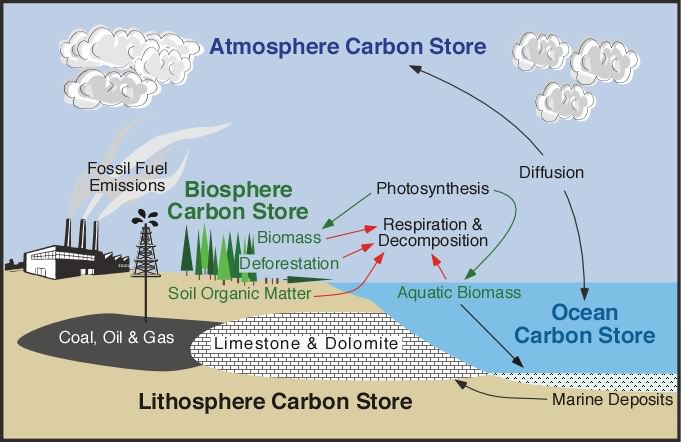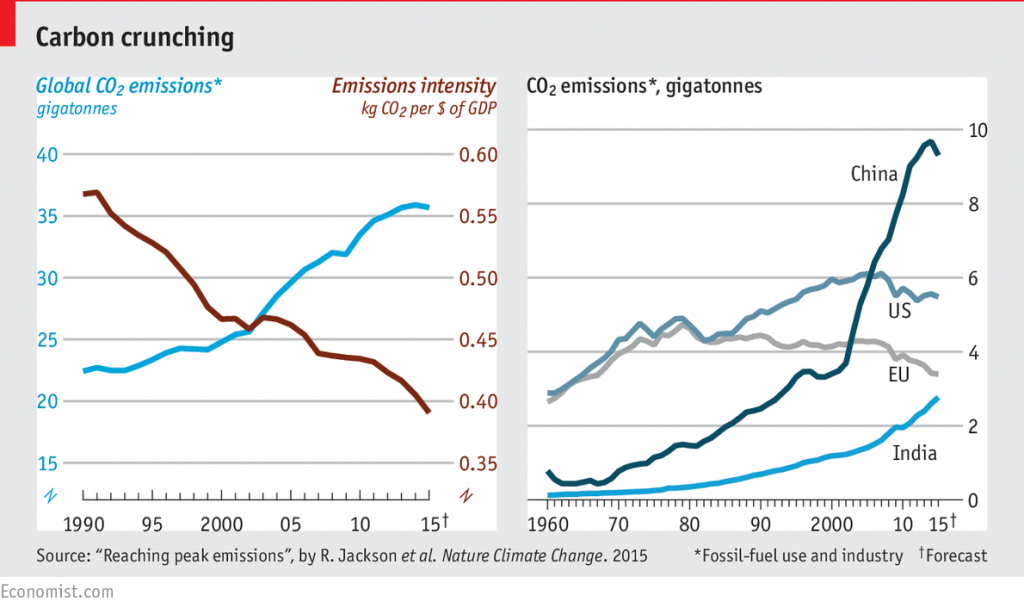There’s been a debate about the pros and cons of offsetting for many years now. Leo Hickman, the chief adviser of climate change at WWF-UK believes “carbon offsetting is both a distraction and a delusion.”
But Duncan Clark, author of The Rough Guide to Green Living believes “If you offset as part of cutting your footprint, or as an incentive to be greener (after all, the less you emit, the less it will cost you to go carbon neutral) then that can’t be bad – especially if the offset projects offer extra benefits such as poverty reduction in the developing world.”
Here we assess the pros and cons of offsetting, to help you answer the question:
Should you offset?
Pros of Offsetting Your Carbon Footprint
You can use credits to measure how much you are giving back
Offsetting can get confusing. There’s a lot of complicated science behind it but buying carbon credits from carbon offset programs make it a lot easier. The credits help you counterbalance your carbon footprint when you can’t avoid creating emissions.
Offsetting projects often have other benefits too
Even Leo Hickman, one of the greatest opponents of offsetting, has said “that shouldn’t disguise the fact that many of the projects that carbon offsetters support are in of themselves “good” projects worthy of our support.”
Some of these offsetting programs are really commendable and make a massive difference not only to the environment but the people it involves. The only way you can really see the difference these programs make is by doing your research. A lot of programs have possible issues with lack of transparency, therefore, the more trackable the program, the more effective it’s likely to be.
If you can go and visit the program, then please do.But if you can’t, it’s probably better to support offsetting program in your country. You may add a small addition to your carbon footprint in order to see foreign programs and assess them. So, it may be environmentally sounder to support offset programs in your own country.

However, researching and supporting a program that helps the environment and also has a greater social impact is not only justifiable but worth it in the long run. It’s also important that you can actually go and see the positive impact of your credits. It makes your contribution seem much more real. And hey, it might incentivize you to be more careful about your carbon footprint day-to-day, and in the long run.
Buzzmove, a comparison website for removals did the same thing when choosing an offsetting program. They quickly realized there were many options to offset their carbon emissions abroad such as a wind-farm in the middle of the Pacific Ocean or planting trees in the Amazon or solar panels for hospitals in the developing world. These projects undoubtedly would have an incredible social impact. But ultimately Buzzmove didn’t believe this would directly offset their carbon emissions.
They decided it was more environmentally responsible to offset locally and invest in the environment surrounding the towns and cities directly affected by the carbon emissions from moving in the U.K. That’s why they concluded that the best way to neutralize the harmful emissions from moving home was by planting trees with Trees for Life.

Trees for Life is an award-winning conservation charity working to restore the Caledonian Forest in the Scottish Highlands. The Caledonian Forest is one of Britain’s most important forest ecosystems, providing a home for a host of wildlife. Buzzmove bought their own grove with Trees for Life in the U.K. because they felt it was a wonderful opportunity to create a collective space for the removals industry to work towards being carbon neutral. It was also something they could track with confidence.
Different credit prices don’t mean it’s a scam
As Duncan Clark explains: “First, there are various ways of estimating the precise impact on climate change of certain types of activity – including flying, which affects global temperature in various ways. Second, different types of offset project will inevitably have different costs – especially given that projects may be chosen not just for the CO2 impacts but for their broader social benefits.”
OK, so there’s no commonly-agreed standard for calculating emissions. But that’s not necessarily a bad thing. There are various ways to estimate – which leads to different costs.
For instance: One company might say you’ve offset one 1 ton of C02 through planting 6 trees which costs $50. Another organization may say you need to pay $100 to offset a flight that emits 1 ton of C02. You may think: why should I pay more when I’m not offsetting more? The difference is, is that flying may impact the climate in a much harsher way. That’s why it’s more expensive.
Additionally, different types of offset projects may say you’ve offset far more because their organization also gives people more jobs. Or perhaps the trees are planted by disadvantaged kids. Particular organizations see these bonuses as a broader social benefit which is therefore awarded more. So as long as the organization explains and justifies how its offsetting program is measured, there’s nothing to worry about.
Cons of Offsetting Your Carbon Footprint
Offsetting “detracts from real solutions”
Sophie Morris writing in The Independent says the “offsetting craze is acting as a smokescreen and detracting from real solutions to escalating emissions.”
According to this view, corporate offsetting can be like ordering a diet coke with your supersized burger and fries. A diet coke has fewer calories than a normal one, true. But that ain’t gonna cancel out all the calories from the greasy food, is it? Let’s be real – this approach to ‘dieting’ is only going to make you fatter because you’re not tackling the real problem. The applies for offsetting.

Shouldn’t we be focusing on what’s causing us to emit carbon in the first place – and cutting down on that? So, before you even think about offsetting, ask yourself:
- Are you recycling to your best ability?
- Are you being energy efficient?
- Do you use low energy lighting?
- Have you already installed home insulation?
At work, you can ask these same questions. And even go further with putting in facilities for electric vehicles like charging points.
You could also use eco-friendly building materials for insulation like wool and wood fiber. Or for structural purposes use stone, straw bale, and a timber frame. For flooring use bamboo, corkwood, hardwood or stone.
If you really want to help improve the environment, make sure you’re trying low carbon solutions before you try offsetting. Once you have, then you can get involved with an offsetting program to neutralize the unavoidable emissions.
The market is unregulated and has no commonly agreed standard
One big potential problem with offsetting programs is there are no established guidelines for calculating your emissions, so different offset companies quote different prices for offsetting the same activity.
Lack of transparency
If you can’t track your donations, then how are you going to know if the credits you’ve bought have been used as they were supposed to? Are there photos? Can you visit? Are there breakdowns of where your spending goes?

For instance, there are many plant-a-tree programs that are very cheap. But when you think about the basic cost of purchasing the tree sapling, bamboo stakes and plastic guards surely this would amount to more than $1? That doesn’t even include the time it takes to research the planting locations. Or coordinating the planting. Or getting the tree planted. Or managing the trees – or the overhead of running the business and communicating with customers, etc. Many of the websites offering such cheap prices only let you pick the country. Maybe also the city if you’re lucky. They don’t even specify exactly what they are planting and where. Another warning sign is when a lot of these sites don’t have a phone number to contact them to even ask all of these questions.
Featured Programs
Invest in offset programs that are passionate about making a difference and not making their pockets grow. My Climate is a favorite of many.
Why? Because they have strict and measurable, independent quality standards drawn up by several international organizations.They only choose and design climate protection projects that have:
- additionality (the project could not happen without financing from CO₂ certificates);
- long-term duration (a minimum duration must be ensured);
- avoidance of double-counting (CO₂ certificates can under no circumstances be counted twice);
- validation through third-parties (projects must be certified by a third party)
Want to offset your air travel? Atmosfair is your winner. This German non-profit focuses on prevention and reduction of carbon emissions, as well as their compensation.
“Compensation cannot solve the problem of climate change since it does nothing to change the actual source of CO2,” they write. “It is a necessary second-best solution as long as the best solution does not yet exist. Individual flight passengers are responsible for examining their actions prior to compensating emissions.”
Want to see end-to-end project development? Climate Friendly is for you. These guys specialize in carbon farming projects in Australia. They have a large, impressive and proven track record of land-based projects across a wide range of methods, land types, land tenures, and geographies. And they provide offsets to both individuals and businesses.

You also don’t have to restrict yourself to non-profits. Balloon Latam is a great initiative that seeks to promote and develop entrepreneurship through the transfer of tools and methodologies of innovation and creativity in disadvantaged communities with little resources yet with the highest potential.
Looking for a conservation charity in the UK? World Land Trust is for you. Since its foundation in 1989, originally as the World Wide Land Conservation Trust, it has helped preserve the world’s most biologically important and threatened lands and to purchase over 300,000 acres of habitats rich in wildlife, in Belize, Costa Rica, the Philippines, South America and the UK.
It prides itself on working with local organizations, its track record, and expertise. It says overheads are low (“under 15%”).
Want to support sustainable development and help travelers and travel providers protect the environment and cultures they visit in the USA? Sustainable Travel / My Climate is right up your street. Its website has carbon calculators for air and car travel as well as for hotel stays.
When should you offset?
Make sure you’ve reduced your carbon footprint as much as you can before you look to offset your emissions. Then, if you’d like to own up to your environmental flaws and help the world in the process, offsetting is the solution.
Why? Because taking any action is better than doing nothing.
Just remember to research as much as you can and check up on where you are putting your money – in particular, what they’ll be using it for. The more stringent the guidelines are in place, the better – especially if these are drawn up by international campaigning organizations.
Lastly, make sure you can track the impact of your money. That way, you can offset with confidence that you’ll be making some kind of positive impact.

Comments
One response to “Pros and Cons of Offsetting Your Carbon Footprint”
Great article about the pros and cons of offsetting our carbon footprint. I learned a lot of new things. Thanks!